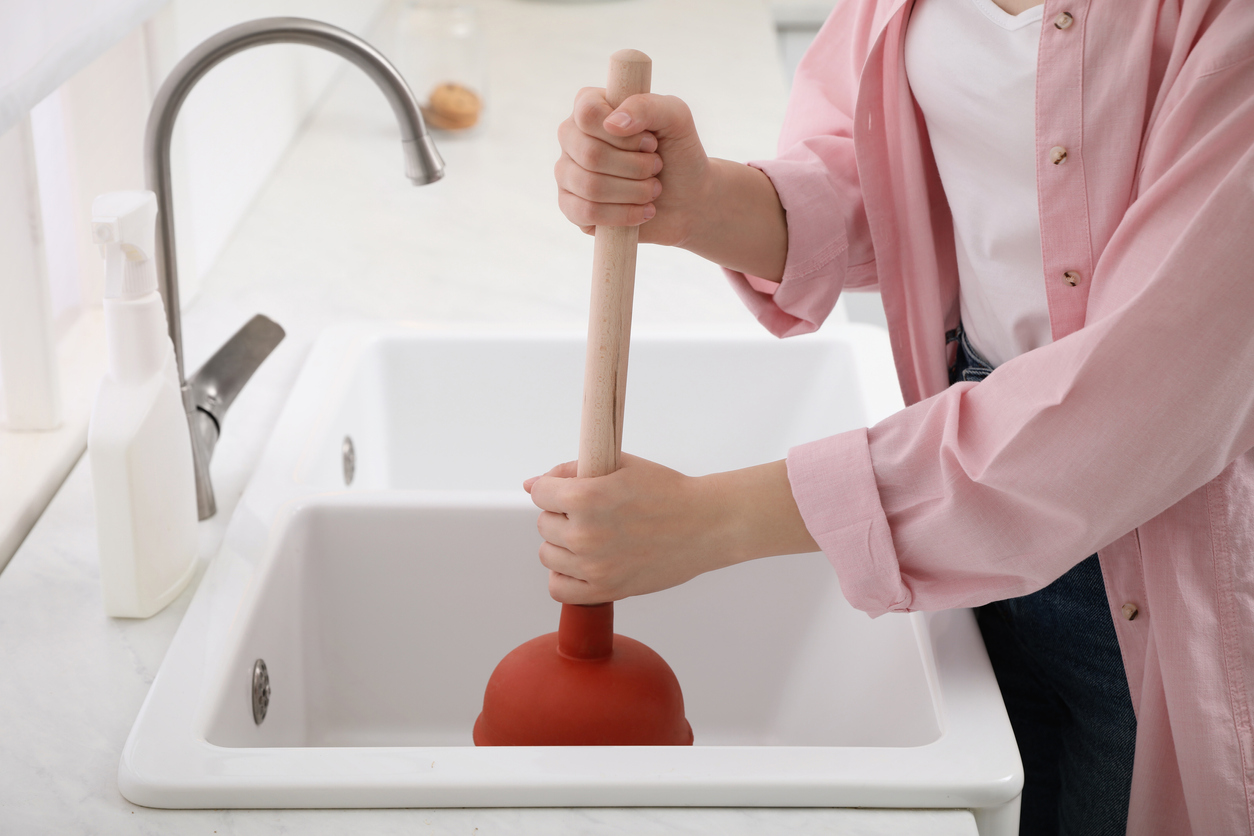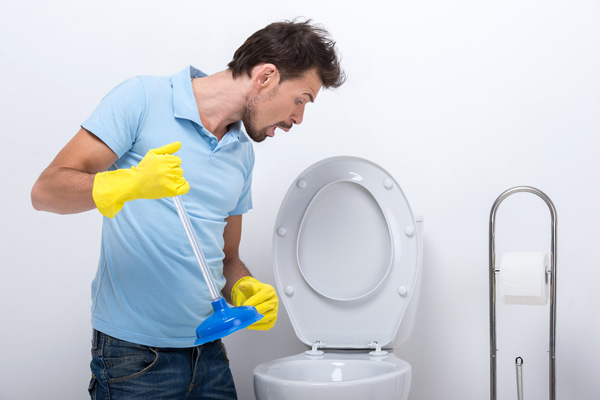Effective Plungers and Drain Cleaner: Key Advice
Effective Plungers and Drain Cleaner: Key Advice
Blog Article
This article following next on the subject of How to Unclog Your Sink with a Plunger is without a doubt insightful. Don't miss out on it.

Intro
Appropriate upkeep of home drains pipes is important for protecting against clogs and making certain smooth water flow. Among the trick devices in every property owner's toolkit is the plunger, along with numerous drain cleaners developed to deal with persistent obstructions properly. This article explores how to use plungers and drain cleansers properly to maintain your drains pipes streaming easily.
Section 1: Understanding Bettors
Sorts of Plungers
There are numerous kinds of plungers readily available, each made for various sorts of drains pipes and blocks. One of the most common kinds include mug plungers, flange bettors, and accordion plungers.
Just How Plungers Job
Bettors work on the concept of creating pressure and suction to remove blockages. When correctly applied over a drain, they create a vacuum that can pull out particles or break up clogs.
Choosing the Right Plunger
Picking the right plunger relies on the type of drain and the nature of the blockage. Mug bettors are perfect for sinks and bathtubs, while flange bettors are much better matched for commodes as a result of their design.
Common Mistakes with Plungers
Avoiding these mistakes guarantees efficient plunging: improper seal around the drain, insufficient pressure, and not clearing bordering debris.
Area 2: Using Plungers Properly
Preparation
Before diving, ensure the bettor covers the drainpipe totally and creates a tight seal. Clear any type of noticeable debris around the drain opening.
Method
Begin with gentle diving movements to build suction. Rise stress progressively, making use of a steady rhythm. Repeat as necessary till the drain removes.
Troubleshooting Tips
If plunging doesn't function, try changing the seal, using oil jelly for a better seal, or utilizing a various type of plunger.
Section 3: Recognizing Drainpipe Cleaning Company
Types of Drain Cleaners
Drain cleaners can be chemical or enzymatic. Chemical cleansers make use of strong chemicals to liquify clogs, while chemical cleansers make use of all-natural enzymes to break down organic matter.
Exactly How Drain Cleansers Work
Chemical cleaners respond with obstructions to dissolve them, while enzymatic cleansers break down organic materials like hair and oil without hurting pipes.
Safety Considerations
Constantly wear handwear covers and eye security when making use of chemical drain cleansers. Guarantee adequate ventilation and adhere to producer directions very carefully.
Eco-Friendly Alternatives
Consider making use of vinegar and baking soft drink or enzyme-based cleansers for green alternatives that are safer for pipelines and the atmosphere.
Section 4: Utilizing Drain Cleansers Properly
Application Strategies
Put chemical cleaners directly right into the drainpipe opening. Enable them to benefit the advised time before purging with warm water. Enzymatic cleansers need to rest overnight.
Precautions
Avoid blending various kinds of cleaners, as this can create harmful fumes. Never ever utilize chemical cleaners along with a bettor, as spilling can take place.
Taking Care Of Stubborn Clogs
For relentless clogs, consider making use of a plumbing snake or calling an expert plumbing professional to stop damages to pipelines.
Final thought
Finally, recognizing just how to make use of plungers and drain cleansers properly is important for maintaining healthy pipes systems. By choosing the right devices and techniques, home owners can tackle minor obstructions and prevent major plumbing problems down the line.
How To Properly Use A Plumbing Snake To Clear Drains
When any drain clogs in our home arise, we tend to gravitate toward the plunger and little else. In cases where the plunger and its vacuum-created pressure are not able to clear clogs, many immediately move to harmful chemicals or simply call their plumber to fix the issue.
we’re happy to help with all drain cleaning needs and concerns. This includes informing you on a few other home remedies you may have at your disposal for minor to moderate clogs, one of which is the use of a plumbing snake. Many people have never used one of these before – let’s go over the steps to take when your drain clogs and you have a plumbing snake available.
Attempt Plunger Use
The first step here, as we noted above, should indeed be to grab your plunger when you notice a drain clog and attempt to resolve it this way. If you’re unsure how to use a particular type of plunger, our plumbers can answer any questions you have. If this doesn’t do the trick, however, you move on to the snake.
Locate And Prepare Snake
A plumbing snake is a metal or plastic device that’s generally about a quarter of an inch thick. It’s design with significant extensions, meant to reach down into your clogged drain and push the clog out. Snakes also contain drain augers that will latch onto and push stubborn blockages.
If your plunger doesn’t clear a clog, locate your snake and bring it to the drain in question. We also recommend keeping a bucket nearby to collect the clog once you pull it out, plus we’d advise wearing goggles and possibly protective gloves.
Feed Snake
Once you’re ready to go, feed the snake slowly down the drain, using the crank device it comes with to keep it moving until it finds the clog. Once this happens, much of the clog will be latched onto the coil so you can pull it out, while the rest will simply break up and flow downward.
Detach Debris
Remove the snake slowly from the drain, and once you’ve done so, pick off any debris that’s stuck to the coil. This is another area where wearing gloves is a must.
Flush Drain
Finally, take a few minutes to ensure the snake has done its job correctly. If you’ve been using it on a toilet, flush the toilet a couple times and make sure everything flows well. If you’ve used it on a different drain, flush it with some room temperature water.
https://www.mybuddytheplumber.com/blog/how-to-properly-use-a-plumbing-snake-to-clear-drains/

Application Strategies
Put chemical cleaners directly right into the drainpipe opening. Enable them to benefit the advised time before purging with warm water. Enzymatic cleansers need to rest overnight.
Precautions
Avoid blending various kinds of cleaners, as this can create harmful fumes. Never ever utilize chemical cleaners along with a bettor, as spilling can take place.
Taking Care Of Stubborn Clogs
For relentless clogs, consider making use of a plumbing snake or calling an expert plumbing professional to stop damages to pipelines.
Final thought
Finally, recognizing just how to make use of plungers and drain cleansers properly is important for maintaining healthy pipes systems. By choosing the right devices and techniques, home owners can tackle minor obstructions and prevent major plumbing problems down the line.
How To Properly Use A Plumbing Snake To Clear Drains
When any drain clogs in our home arise, we tend to gravitate toward the plunger and little else. In cases where the plunger and its vacuum-created pressure are not able to clear clogs, many immediately move to harmful chemicals or simply call their plumber to fix the issue.
we’re happy to help with all drain cleaning needs and concerns. This includes informing you on a few other home remedies you may have at your disposal for minor to moderate clogs, one of which is the use of a plumbing snake. Many people have never used one of these before – let’s go over the steps to take when your drain clogs and you have a plumbing snake available.
Attempt Plunger Use
The first step here, as we noted above, should indeed be to grab your plunger when you notice a drain clog and attempt to resolve it this way. If you’re unsure how to use a particular type of plunger, our plumbers can answer any questions you have. If this doesn’t do the trick, however, you move on to the snake.
Locate And Prepare Snake
A plumbing snake is a metal or plastic device that’s generally about a quarter of an inch thick. It’s design with significant extensions, meant to reach down into your clogged drain and push the clog out. Snakes also contain drain augers that will latch onto and push stubborn blockages.
If your plunger doesn’t clear a clog, locate your snake and bring it to the drain in question. We also recommend keeping a bucket nearby to collect the clog once you pull it out, plus we’d advise wearing goggles and possibly protective gloves.
Feed Snake
Once you’re ready to go, feed the snake slowly down the drain, using the crank device it comes with to keep it moving until it finds the clog. Once this happens, much of the clog will be latched onto the coil so you can pull it out, while the rest will simply break up and flow downward.
Detach Debris
Remove the snake slowly from the drain, and once you’ve done so, pick off any debris that’s stuck to the coil. This is another area where wearing gloves is a must.
Flush Drain
Finally, take a few minutes to ensure the snake has done its job correctly. If you’ve been using it on a toilet, flush the toilet a couple times and make sure everything flows well. If you’ve used it on a different drain, flush it with some room temperature water.
https://www.mybuddytheplumber.com/blog/how-to-properly-use-a-plumbing-snake-to-clear-drains/

I'm just very drawn to How to Use a Plunger to Unclog a Toilet or Drain and I am assuming you liked my piece. Sharing is caring. Who knows, you may be doing someone a favor. Thank you for your time invested reading it.
Schedule Appointment Report this page